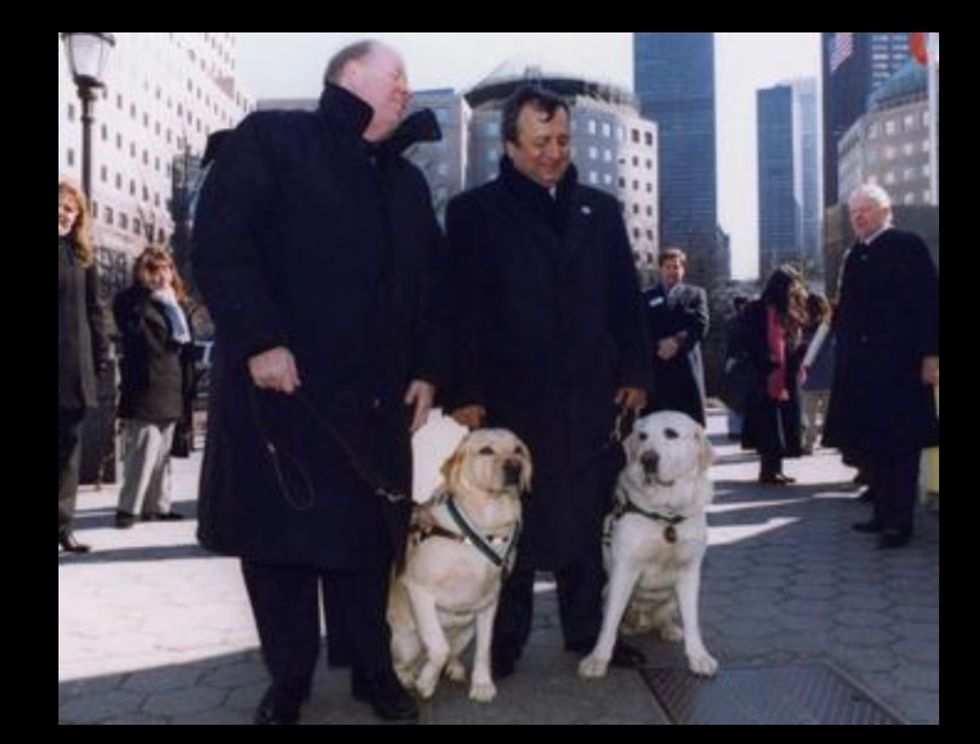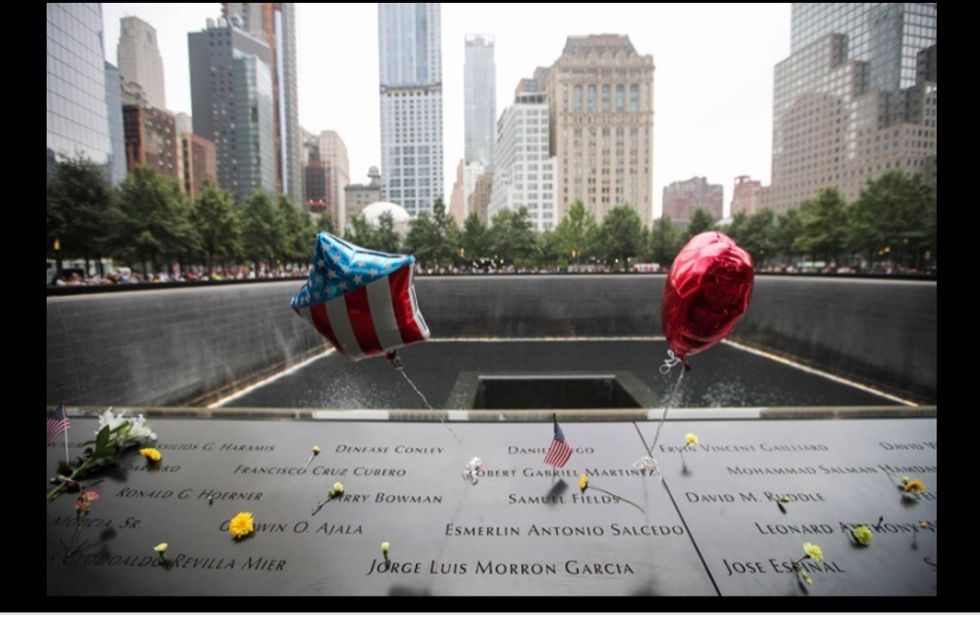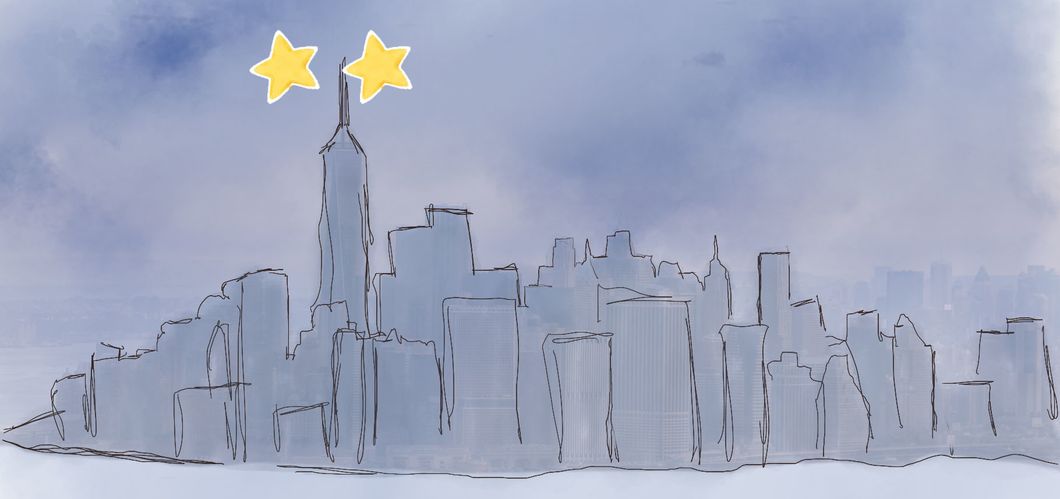The Four-legged Heroes of 9/11
This article is about the search and rescue dogs of ground zero.
Sketch of Sirius, one of the working dogs at Ground Zero.
It was September 11, 2001. Every day, 50,000 workers and over 200,000 visitors fit into the buildings known as the World Trade Center. Their lives would be forever changed by 8:45 that morning, when the first plane struck the north tower of the World Trade Center. Amid the rubble and dust within the following hours and days, hardworking personnel from across the country gathered to help. Among all of the rescue personnel who responded to the scene, including firefighters, EMTs and police officers, an estimated 500-900 of those risking their lives that day had fur and four legs.
These four-legged heroes were the search and rescue dogs of Ground Zero. Over the course of 10 days, for 12-16 hours per day, canine and human worked tirelessly side by side in an effort to search for survivors and human remains. The dogs, lacking most of the protection that their human counterparts wore, worked tirelessly day in and day out to find victims. They climbed over hot rubble amidst massive clouds of dirt and debris, and they pushed their furry bodies to their limits.
These dogs were also a source of relief and comfort to everyone involved. A study was done that showed that individuals affiliated with the dogs that day and in the days after have had lower incidences of post-traumatic stress disorder (PTSD). Dr. Cindy Otto, DVM, PhD, and founder of the Penn Vet Working Dog Center said that every working dog involved that day was an “anchor” for victims and workers alike.
The Penn Vet Working Dog Center, founded by Otto, opened its doors in 2012 to train working dogs in order to set a standard for working dogs. It was noticed during the chaos of 9/11 that, since the working dogs came from all over the country to Ground Zero, some of the dogs had different training and different commands. The center was also opened to train dogs in order to give them healthier and longer lives. Every dog that comes through the center is named after a dog or individual who worked tirelessly on that day 15 years ago. As an example, Riley, a diabetic alert dog in training at the Penn Vet WDC, is named after a golden retriever search-and-rescue dog with FEMA’s Pennsylvania Task Force 1. As someone who is personally connected to the center, I can say with certainty that the center is one of the best things that came out of the dogs working on 9/11.
Riley, the golden retriever search and rescue dog on 9/11, being lifted away from a rubble pile.
Riley, named after the golden retriever search and rescue dog of 9/11, who is being trained as a diabetic alert dog at the Penn Vet Working Dog Center.
Fifteen years ago, our world was forever changed, but our four-legged heroes gave us some light in all of the darkness. To all of the canines, including Riley, who gave and risked their lives on that day fifteen years ago, we salute you.
(from left) Chris Selfridge and Riley, Bobbie Snyder and Willow, Cindy Otto, Rose DeLuca and Logan, and John Gilkey and Bear.


































Stop Visiting Memorial Sites For Instagram Likes
A serious problem with social media use today is how our looks and appearances can be valued more than the historical and serious contexts where we snap our pictures.
There is no question that social media has provided many benefits to society. We can keep up with long distance family and friends. We are exposed to news and current events the second they happen. We can see the personal sides of our favorite celebrities, artists, and athletes. There is a sense of wholesome interconnectedness that comes from this high volume of media exposure from social networking that has become so normal in our daily life.
The youth of the world today are often discredited and criticized for their use of selfies and social media, with accusations that they are too self-centered. Here is the disclaimer: social media does not make people self-centered, and there is no shame in wanting to post a selfie or any updates about what you are up to or where you have been. It is a condition of the younger generations to use selfies and social media to "place oneself in a context, to understand how we fit into a bigger picture." As reviewed by social psychologists, this phenomenon should not be written off as a constant attention grab, but it is a healthy form of self-expression.
This is healthy when used in moderation. A major drawback from this common practice of social networking is how quickly it can make us value the wrong things. Instead of posting something to share a genuinely happy moment, it is easy to become enthralled in wondering: How many followers can I get? How many likes can I get on this picture? Who's going to see and comment on my post? This can make some social media users lose sight of the actual intention of their posts and the context in which they are posting certain things.
Again, there is nothing wrong with posting a selfie, or posting pictures from a family vacation, or spending time with friends. Social media exists so we can all update what we are doing. But when the number of likes you can get on your post becomes more important than the intention of giving a life update, it becomes a problem. An even bigger problem is when the post is more about how good you look instead of what is actually going on in the photo.
More specifically, this issue is concerning people who have opted to post selfies when visiting historical monuments and memorials of tragedies in world history. Many people post on social media when they are visiting a new place, such as a new city or a famous monument. This is great- show your family and friends the experience you had and what is new in your life. But maybe it is not the best idea to make the picture and post about how good you look when you are visiting such a serious location. It is also completely acceptable to post about these memorialized locations in general, but when it is done respectfully or emphasizes the impact this historical context had on the world.
There are countless examples of people posting to Twitter or Instagram in somber locations such as the World Trade Center, Auschwitz Concentration Camps, etc. where the post is not focusing on the memorials, but on the person. Posts like these show complete inconsideration for what event and the lives lost that these locations are actually memorializing, and emphasizing one's own looks instead of the context of these places shows complete disregard for the memorial's purpose. Some examples of these types of posts can be found here:
The Auschwitz Concentration Camp is not a memorial so that you can take a selfie. It is a piece of history that still stands today and allows visitors so that we can remember the countless victims who were torn from their families and suffered abuse and death in a mass genocide. The World Trade Center 9/11 Memorial does not exist so that you can show off how good you look. Again, it stands today and is open to tourists so that we can reflect on the tragedy that happened in New York and mourn the lives lost in the terrorist attack.
An example of this awful habit in pop culture is when YouTuber Logan Paul filmed a video in the Aokigahara forest in Japan. This forest is known for the high number of suicides that take place there every year. In the video, Paul shows the body of an apparent victim of suicide, and conducts himself in a manner throughout the video that shows little to no respect for the lives lost in that forest every year. After the video was posted, Logan Paul faced a lot of backlash for posting something so disrespectful and for being so negligent just for the sake of posting content about himself.
Bottom line, here's a helpful social media tip: maybe open a history book before you open up your social media apps!